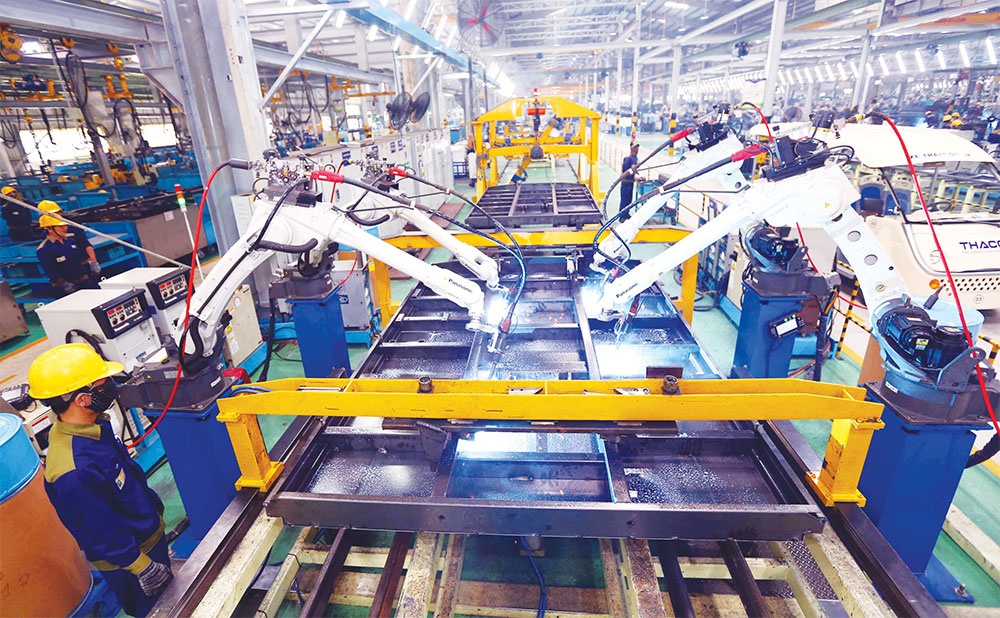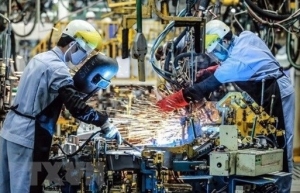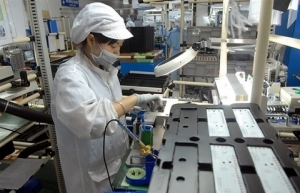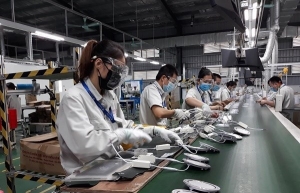The new face of manufacturing supporting industries
Without mutual support, domestic manufacturers continue to wait for market capacity to be large enough to accept competition with suppliers from outside.
 |
| With the right incentives, localisation is expected to boost manufacturing nationwide |
As many final consumer products require a series of manufacturing processes, when mass producing, one cannot do it all by themselves. This is how new supply chains are formed, however, without the concept of supporting or ancillary industries.
Within the motorbike market, each year Vietnam consumes nearly three million units. Such output is very attractive for manufacturers, who easily achieve efficiency brought about by mass production.
When implementing localisation, it is not difficult to attract suppliers whose supply chain is specialised and professional at each stage. The supply chain is formed by the needs and advantages of the market, without requiring a policy for the development of the supporting industry.
Meanwhile, for Vietnam’s auto industry, the development conditions are completely different. Although the total market capacity has recently reached 200,000 locally assembled vehicles and more than 100,000 complete vehicles – with dozens of them assembled in Vietnam – manufacturing components of each type can only reach an output of up to 2,000 per year. It will be difficult for any investment calculation when the output is so small. No corporate income tax incentive, land rent reduction, or any other attractive and supportive policy can offset the investment costs in equipment, human resources, and required management systems as these are much higher than in the production of components for two-wheelers.
Non-dividing competition
The electronics sector is also becoming more prominent, attracting billions of US dollars of foreign investment, and contributing to a large proportion of the country’s total export turnover. In 2021, the export turnover of computers and electronic components reached almost $51 billion, up over 14 per cent compared to 2020 and accounting for over 15.1 of the country’s total export turnover of goods, according to the Ministry of Industry and Trade.
Although output is large, the need to develop the production of components on the spot, which often takes a long time, is not urgent. The current policy is too favourable in terms of land, infrastructure, and income tax at the assembly stage, in addition to the provision of cheap labour and the import of components, which is not limited in terms of tariff barriers and supply capacity from outside.
Looking at Vietnam’s industry, the size of an industry and its potential for supply chain development depend first on the market. Attracting investment in a specific industry, such as automobiles, is the main factor to meet the domestic market demand, but policies sometimes restrict the market with taxes, fees, and registration procedures.
For industries that have a domestic market size and can export, the ability to develop the supply chain depends on the limitations of external supply capabilities and the ability of enterprises to rise up in the country.
In Vietnam, an investment attraction policy is an orientation. Enterprise resources are also common resources in the country. An industry already has a number of investors, but may not yet meet the development expectations of the national industrial plan. The problem may be the size of the market itself, not the capacity of investors.
Continuing to invite and attract investment with special incentives can help new enterprises find competitive advantages over existing businesses, but not necessarily solve other development expectations. The steel industry is an example. While the capacity to produce construction steel is redundant, the invitation to invest in more large-scale steel plants does not necessarily create a manufacturing steel industry.
Attracting investment to the automobile industry in the past 25 years is also a typical example related to the market size. Despite the presence of the world’s leading auto manufacturers, the investment in the localisation of auto components cannot disregard the market reality.
While participating in the supply chain of a certain product, the opportunity is often open to all players. When competing with foreign investors in the Vietnamese market, domestic enterprises are often limited in technological and management capabilities.
Except for some technologies that domestic enterprises cannot develop themselves and cannot receive through a transfer, in the remaining cases, the limitations in human resources and management capacity have made it impossible to meet the requirements of the domestic market and original opportunities.
The motorcycle industry has a high localisation rate. Yet, among the hundreds of component manufacturers, foreign-invested suppliers dominate. When only looking at this in terms of the domestic production rate, there is no distinction between domestic and foreign investors. However, from a fair perspective, domestic enterprises do not have as many opportunities in the process of industrialisation as their counterparts in some of the surrounding countries.
Reciprocal support
Except for export processing zones, the most important objective of attracting investment for the domestic market is to promote localisation development. When the domestic market is too small, it is not possible to develop domestic supply. However, preferential policies through tariff barriers also need to be reciprocated by supporting the development of domestic supply chains.
Without the support of investors with global supply chains, it is difficult for domestic manufacturers to fulfil their role, even as secondary suppliers, as they are inferior in all aspects. If domestic enterprises are actively looking for opportunities in foreign markets, they must largely rely on partners who are foreign suppliers looking for more competitive secondary supplies from Vietnam.
Any preferential policy must start from the ground up. Favourable support for businesses must begin with the establishment of a business, access to loans, production premises, and labour recruitment. Some policies from the government that can create favourable conditions for enterprises in the manufacturing industry support technology transfer, building management systems, and the training of human resources, among others.
Given the current conditions of Vietnam, incentives for any manufacturing industry will have an impact on other industries. Incentives for one business can also lead to the pinching of one or several other businesses. Incentives that lead to a decrease in revenue for one business can lead to pressure to increase taxes and fees on other businesses and consumers.
 | New steering committee suggested to resolve issues for supporting industries The government should establish a national steering committee, headed by a deputy prime minister, to promptly resolve problems and challenges facing supporting industries, according to Nguyen Hoang, Vice Chairman of the Vietnam Association for Supporting Industries (VASI). |
 | Hanoi to develop supporting industries The capital city of Hanoi has set up many solutions to develop other supporting industries, aiming to increase the municipal supporting industry development index. |
 | Industrial production recovers quickly with growth of 9.4 percent in eight months The index of industrial production (IIP) in the first eight months of 2022 surged 9.4 percent over the same period last year, according to the General Statistics Office (GSO). |
What the stars mean:
★ Poor ★ ★ Promising ★★★ Good ★★★★ Very good ★★★★★ Exceptional
Related Contents
Latest News
More News
- Main drivers for Vietnam’s digital economy future (December 03, 2025 | 11:35)
- Pivotal stage of growth paves way for rise in M&As (December 03, 2025 | 10:00)
- Positive projections for M&A interest from Thailand (December 03, 2025 | 09:40)
- Manifesting the first line of defence in cybersecurity (December 03, 2025 | 09:00)
- The transformational role AI can play in accounting arena (December 03, 2025 | 08:00)
- Unlocking 5G-AI potential in Singapore (December 03, 2025 | 08:00)
- Data-driven strategies vital for a fast-evolving nation (December 02, 2025 | 09:41)
- Policy to practice: how Vietnam can lead the region (November 26, 2025 | 16:03)
- Mobilising private capital at scale vital for climate battle (November 26, 2025 | 15:36)
- VILAF and Yoon & Yang launch Vietnam - Korea Practice Unit (November 26, 2025 | 15:16)

 Tag:
Tag:





















 Mobile Version
Mobile Version